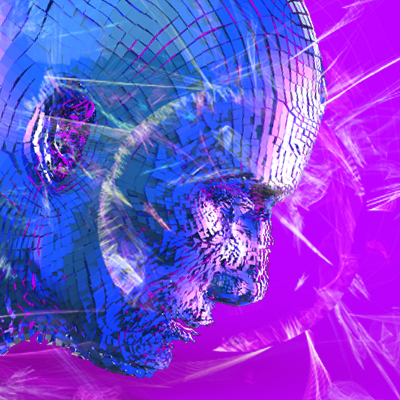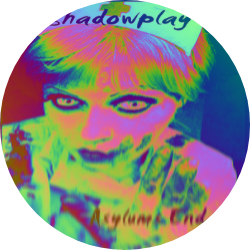Technoshaman: from worldbuilding to mindbuilding: Part 1
Jan. 13, 2023.
15 min. read.
27 Interactions
Digital information is ubiquitous. It’s now on our desktops, in our pockets, wrapped around our wrists, distributed throughout our homes, and increasingly co-opting our nervous systems.
Engaging on smartphones focuses us on digital information while reducing our awareness of physical reality. Virtual reality (VR) takes this further by attaching a smartphone to our face, immersing us in a digital reality, while augmented reality (AR) interleaves cyberspace into our physical domain.
And now, the metaverse — a collection of online, shared virtual environments where users embody avatars to connect, play and explore — beckons us to live our lives in a cyber reality.
These extended-reality (XR) technologies are becoming increasingly immersive via advancements in digital imaging and displays, graphic processors, deep learning, and brain-computer interfaces.
So, where is XR technology taking us? How will it be used? What are we evolving into? And how can this increasingly ubiquitous digital technology be harnessed to best serve — and not harm — humanity?
These questions bring us to media, consciousness, and future tech. We’ll explore the power of XR for social impact, digital pharmacology and transformative experiences. And we will investigate the origins of entertainment, from the roots of shamanism to today’s celebrities and digital spectacles.
A new archetype emerges: the Technoshaman —— one who crafts multisensory digital worlds and experiences to elevate and harmonize human consciousness on a mass scale.
XR tech evolution
Immersive media is a fast-growing ecosystem that fundamentally changes how we produce, distribute and consume media. XR modalities are disrupting the very notions of content production, distribution and consumption. Our media lexicon has expanded to include the experiences of embodying, interacting, crowdsourcing, socializing, crypto-minting, worldbuilding, and user-generated content.
The immersive media ecosystem includes:
Virtual reality, where a headset replaces our view of the physical world with an interactive virtual environment or Cinematic VR (also called 360° cinema or cinematic reality), where a spherical field-of-view is captured with a 360-degree camera and displayed in VR.
Augmented Reality, where a smartphone, tablet, or see-through headset with special optics accurately places digital “holograms” into the real world — including people, avatars, textures, or 3D animations. AR was popularized by the mobile phone game craze, Pokémon Go.
Spatial Augmented Reality (SAR), commonly known as projection mapping, applies pixels directly onto architectural spaces or 3D objects to create digitally augmented environments. Digital domes are a special case of SAR where immersive environments are created for large groups by projecting (or wrapping LED panels) onto seamless domes or spheres. Next-generation LED-based XR stage volumes — another special case of SAR — are increasingly used for virtual production in film and television.
Mixed Reality offers deep interaction with both physical and virtual elements. Location-based experiences such as Dreamscape and The Void use body tracking and VR headsets, allowing a small group of friends to embody avatars and interact as teams within a virtual world. The teams move through a real-world space with props (including doorways, control panels and railings) that are accurately registered to the virtual world. This allows participants to reach out and touch those digitally enhanced objects as if they are real.
These five modalities — CR, VR, AR, SAR, and MR — are collectively referred to as immersive media, cross reality, extended reality, or simply XR.
The effectiveness of XR interfaces and experiences is based on three senses:
- A sense of presence — the feeling of actually “being there” in a virtual or augmented world.
- A sense of embodiment or ownership — the level of identification with an avatar or digital representation of oneself.
- A sense of agency — the feeling of free will, intentional action, or motor control within the virtual world.
XR interfaces are, in essence, portals into cyberspace or, as we are now calling it, the metaverse.
The metaverse: future of the internet
The metaverse is envisioned as the next evolution of the internet — a collection of real-time, 3D interactive virtual worlds where people work, meet, play and create their own worlds, games and events.
In the metaverse, we become avatars — digital representations of ourselves — to enter virtual or augmented worlds. Avatars can appear realistic or cartoonish or take on various forms such as animals or angels. They can obey mundane physics, or they can fly, throw lightning bolts or wield other magical powers. Avatars enhance our sense of presence, embodiment and agency while providing a social identity as we explore metaverse worlds and meet and socialize with others.
The concept of the metaverse as a shared cyber reality has thoroughly captured the attention of Hollywood and Silicon Valley, who are now investing in the dream of the metaverse as the next-generation internet.
Major players include Microsoft’s AltspaceVR, Meta’s Horizon Worlds, Epic Games and soon, Apple. Notable metaverse platforms include Neos VR, VR Chat and Engage, which allow basic interaction without fees.
Blockchain-based metaverse worlds such as Decentraland, The Sandbox, Bloktopia and SuperWorld allow virtual land to be purchased and traded with cryptocurrency — in some cases for millions of dollars per plot.
Continued investments in future technologies (see Table One below) will supercharge XR interfaces and experiences to bring a heightened sense of presence, embodiment and agency, whether we are at work, home, or in public spaces.
Unique integrations of these technologies can create metaverse-like sentient spaces in entertainment venues, community squares, retail stores, and hospitals that approach Star Trek’s Holodeck without AR glasses or VR headsets.
What will our lives be like when we are immersed in a digital reality wherever we go? What sort of worlds will we create? Will we be overwhelmed with ads and information? Or will we live in beautiful digitally enhanced worlds that we command? What kind of storyworlds will we create and inhabit? And most importantly, what influence will this new media have on society, culture, consciousness, and the course of human evolution?
Next-gen storytelling
Consider the potential impact of XR technologies on traditional storytelling. Narrative films use cinematic language, which has been developed and refined over the past 100 years. Cinematic storytelling does not easily translate into VR, however, creating evolutionary pressure for worldbuilders to innovate new storytelling methods for virtual worlds.
VR-experience designers are expanding the storyteller’s palette with new possibilities, including new participant points-of-view, interactive games, simulation of positive futures, expanded worldviews, avatar embodiment, social impact entertainment, group location-based entertainment experiences, contemplative practices and more.
Film is limited in its ability to portray or evoke a full range of human emotions and experiences. Cinematic storytelling suggests a character’s inner state-of-affairs through their narrative, behaviors and micro-expressions. Some films tell stories through a character’s internal dialog or attempt to enter the realm of consciousness through memory montages, flashbacks or impairment shots. While first-person narrative provides a window into the protagonist’s minds, the fullness of our ineffable inner experience is difficult to transmit through common cinematic devices.
Non-narrative “art” films have seen some success, including Koyaanisqatsi (Godfrey Reggio, 1982), Baraka (Ron Fricke, 1992) and Samsara (Ron Fricke, 2011). These films are representational in nature, creating an arc using music and suggestive live-action cinematography.
These non-narrative films can evoke ineffable states by withholding cognitive stimulation — which tends to distract participants by engaging their intellect and instead emphasizes affect.
Visionary art, surrealistic, or non-representational abstract art relies on pure effect to evoke deeper, more sublime emotions and states of consciousness. One popular use of abstract art is visual music, which is often employed by VJs at electronic music dance parties, concerts and light shows. Like a Rorschach inkblot test, viewers of abstract art are free to project their own meaning onto the imagery. Music or sounds then drive affect, with the colors, shapes and movement of abstract art captivating or entrancing the mind, often freeing the participant from their own internal dialog for a time.
Films based on abstract or visionary art are often labeled experimental or avant-garde and rarely achieve popular acclaim. However, immersive abstract art — especially 360° dome films — have proven to be highly effective and commercially viable, perhaps because they command more of our visual field, which amplifies the visual effect.
Cases in point include planetarium laser light shows pioneered by Laserium and more recent 360-dome video shows such as James Hood’s Mesmerica, which seeks to take participants on a “journey inside your mind” — using stunning visuals and poetic narrative. Indeed, the abstract art of Mesmerica leaves room for participants to project their own minds outward, truly making it an inward journey.
While planetariums and XR domes are well known for cosmological cinema — a term coined by dome pioneer David McConville, what is emerging now is best described as phenomenological cinema — XR storytelling journeys into the realms of the mind.
Neurological benefits
The deeper neurological effects of VR are evidenced by its clinical efficacy in treating anxiety, eating, and weight disorders, pain management and PTSD. VR pioneer Chris Milk called VR an empathy machine in his 2015 TED Talk.
Worldbuilders can construct inhabitable virtual cities and communities, create spectacular immersive art and entertainment experiences, supercharge storytelling, develop multiplayer games and more — imbuing their emotions, values, and worldview, and ultimately, their consciousness, into the worlds and experiences that they create.
Not surprisingly, XR technologies such as VR have successfully stimulated greater awareness and empathy for a variety of social causes, including environmental issues, crime victims, refugees and more, through immersive journalism. Storyworlds can include worlds of mind and imagination by simulating possible futures, worlds of fantasy and enchantment and deeper layers of the psyche.
Gene Youngblood anticipated the trajectory of media to include the externalization of consciousness in his 1970 book Expanded Cinema:
When we say expanded cinema, we actually mean expanded consciousness. Expanded cinema does not mean computer films, video phosphors, atomic light, or spherical projections. Expanded cinema isn’t a movie at all. Like life, it’s a process of becoming, man’s ongoing historical drive to manifest his consciousness outside of his mind, in front of his eyes. One no longer can specialize in a single discipline and hope truthfully to express a clear picture of its relationships in the environment. This is especially true in the case of the intermedia network of cinema and television, which now functions as nothing less than the nervous system of mankind.
In her book Reality is Broken, visionary game developer Jane McGonigal explored the potential of imaginary game worlds to elevate human consciousness:
The real world just doesn’t offer up as easily the carefully designed pleasures, the thrilling challenges and the powerful social bonding afforded by virtual environments. Reality doesn’t motivate us as effectively. Reality isn’t engineered to maximize our potential. Reality wasn’t designed from the bottom up to make us happy…
Today, I look forward and see a future in which games once again are explicitly designed to improve quality of life, to prevent suffering, and create real, widespread happiness.
As the XR metaverse is adopted on a mass scale, worldbuilders will find themselves wielding power to influence others far beyond today’s social media platforms.
Phenomenological cinema
Our life experiences include highly subjective, personal or contemplative states of consciousness that are difficult to portray through the cinematic language, which focuses on physical expressions, behaviors and dialog. However, many phenomena of consciousness are ineffable, existing only in the realm of phenomenology — essentially, the direct inner experience of consciousness.
For instance, a Zen master’s meditative journey would be impossible to portray in cinema through outward expressions. We would merely see a person sitting in meditation, expressionless, while internally, they experience a state of samadhic bliss. To portray such a state, we would need to simulate the Zen master’s inner experience, essentially entering and experiencing their mind.
XR technologies emerged from training simulators for vehicles such as aircraft. We are now finding that not only can physical world experiences be simulated, as with cinema, but inner states of consciousness can be simulated and even evoked or transmitted through immersive media.
One of the most powerful such states is known as the mystical, unity, non-dual or transcendent experience. As described by visionary artist Alex Grey:
The mystical experience imparts a sense of unity within oneself and potentially the whole of existence. With unity comes a sense that ordinary time and space have been transcended, replaced by a feeling of infinity and eternity. The experience is ineffable, beyond concepts, beyond words. The mental chatterbox shuts up and allows the ultimate and true nature of reality to be revealed, which seems more real than the phenomenal world experienced in ordinary states of consciousness. When we awaken from a dream, we enter the “realness” of our waking state and notice the unreal nature of the dream. In the mystical state, we awaken to a higher reality and notice the dreamlike or superficial character of our normal waking state.
Grey goes on to describe how transcendent states, which are central to his art, are non-dualistic and are better expressed through art than words:
Conventional, rational discourse is… dualistic. Perhaps that is why art can more strongly convey the nature of the mystical state. Art is not limited by reason. A picture may be worth a thousand words, but a sacred picture is beyond words.
Worldbuilders are learning to create non-dualistic worlds that evoke ineffable, transcendent states of consciousness.
The technoshaman
In his 1985 book The Death and Resurrection Show: From Shaman to Superstar, Rogan Taylor traces our modern entertainment industry back to the earliest of all religions: shamanism. Shamans went on inner journeys, often fueled by entheogens, on a vision quest for their tribe.
Then they communicated those visions to the people, using impactful storytelling techniques, including song, dance, costumes and masks. In this manner, it is said, shamans managed the psyches of their tribe, bringing them into a shared vision and empathic coherence.
Technoshamanism emerged from 1960s counterculture, with its aspirations of spiritual technologies and altered states of consciousness, later evolving into transformational festivals and electronic dance music culture.
Mindbuilding
Modern-day shamans, or technoshamans, add powerful XR technologies to their toolkit. They are able to simulate and transmit their inner experience to participants, using phenomenological cinema and digital pharmacology techniques, plus modalities such as cultural activations, future-world building and narrative modeling.
Technoshamans are moving into the mainstream and can be found in art galleries, popular music entertainment, dance events, digital domes, music and art festivals, expos, game worlds and, of course, the metaverse. They use XR technologies to open hearts and minds by evoking awe, happiness, pleasurable moods and mindfulness states. Technoshamans model new ways of being, visualize hopeful futures and create shared immersive spaces that build community, connection, a sense of togetherness and unity consciousness.
Unlike filmmakers, who craft television and feature films, and unlike game developers and metaverse worldbuilders, the goal of the technoshaman is mindbuilding. This is the use of digital immersive experiences to evoke unique brain states and inspire new worldviews and new ways of being in their participants.
The technoshaman accomplishes this — not through contrived stories or experiences, philosophies, ideologies, propaganda, or branding, but by actually embodying these evolved states and transmitting them through the power of multisensory XR experiences.
The technoshaman seeks not just to entertain or inform, but to transform.
Stay Tuned. In Part 2, we will deep-dive into technoshamanism, including the power of XR to evoke alternate states of consciousness, digital pharmacology, the science of transformation, and eight principles of the technoshaman.
Part 2
Emerging XR Technologies
The technologies below have the potential for supercharging XR user interfaces to create more natural or realistic human-machine interaction in both at-home and out-of-home environments.
| Technology | Application |
| Audio | |
| Wave Field Synthesis | Freespace “holographic” sound reconstruction |
| Ambisonics | Open source 3D audio recording/playback |
| Binaural Synthesis | Synthesizing 3D audio for playback in stereo |
| Biometrics | |
| Wearable Biometrics | Rings, wrist bands and patches with various sensors |
| Facial Recognition | User identification through facial recognition |
| Emotion Recognition | AI-based recognition of emotions |
| Brain-Computer Interfaces | Non-invasive brainwave sensing for computer control |
| Direct Neural Interfaces | Brain implants for computer interfaces |
| Markerless Motion Capture | Human motion capture without wearable sensors |
| Gesture Recognition | Real-time hand gesture recognition |
| Imaging | |
| Real-Time Volumetric Capture | Real-time capture of 3D textured mesh models |
| Lightfield Imaging | True volumetric/holographic image capture |
| 3D Depth Sensing Cameras | Image capture with depth/range information |
| Multisensory | |
| Haptics | Tactile user interfaces |
| Telehaptics | Remote touch interfaces |
| Aroma | Scent displays |
| 4D Theater Effects | Variety of integrated multisensory effects |
| Software | |
| Web3 | Next-gen decentralized internet |
| Deep Learning AI | Layered neural networks |
| Game Engines | Real-time 3D worldbuilding tools |
| Visual Displays | |
| Autostereoscopic Display | Planar 3D stereoscopic display without glasses |
| Lightfield Display | True volumetric/holographic display |
| Retinal Display | Images scanned directly onto retina |
| AR/VR Displays | Goggles or glasses for AR and VR |
| LED Domes | LED-based immersive displays |
Let us know your thoughts! Sign up for a Mindplex account now, join our Telegram, or follow us on Twitter.

.png)

.png)


.png)









0 Comments
0 thoughts on “Technoshaman: from worldbuilding to mindbuilding: Part 1”